February 2025
Significant Weather Events:
This winter had no shortage of arctic blasts in the Southern Region and February was no exception to this. On February 18th, a blast of polar cold air overtook the Southern Region and left things frigid. Left behind with the cold temperatures, snow fell from North Texas to Tennessee. With this system, five to six inches fell in Northwest Arkansas.
A few severe weather systems made their way through the Gulf states and lower Appalachian Mountains this past month. Overnight on the 6th a supercell, containing a tornado, moved east across northern Tennessee. Four tornadoes were confirmed with this storm, including an EF-2 tornado in Southern Jackson County. These tornadoes injured several people and took the lives of two people. Starting on February 12th, a line of storms formed in Southeast Texas and strengthened as they moved east into Mississippi by the early morning of the 13th. Associated with this line of storms were several reports of severe wind and a few weak tornadoes. A few days later, on the 15th, another line of storms would sweep through the area bringing more severe winds and tornadoes. One of these tornadoes was an EF-2 in Gibson County, Tennessee. Fortunately, no deaths or injuries were associated with this tornado.
Temperature:
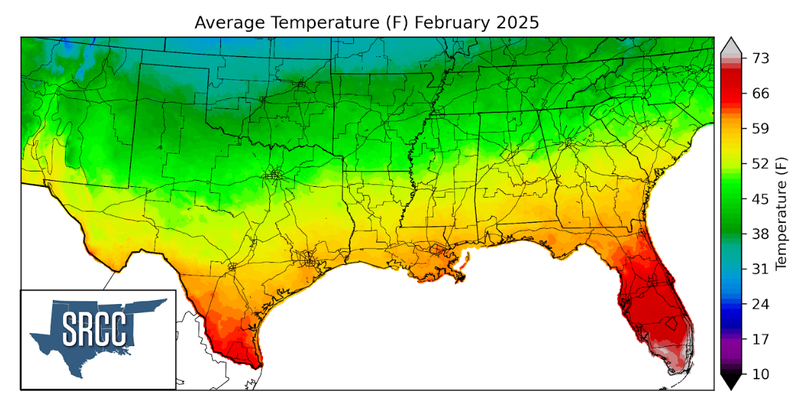
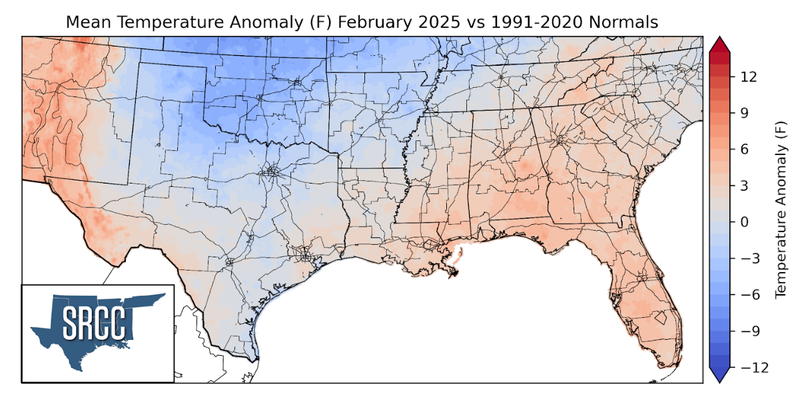
Despite an unseasonably warm start to the month, the monthly temperature average for February turned out near normal across much of the Region, apart from North Texas, Oklahoma, and Arkansas which favored temperatures below normal. Near-normal temperatures, though, start to make sense when you look at the month week by week. This February we had one week of temperatures well below normal and one week of temperatures well above normal, effectively canceling each other out. Between record low temperatures and record high temperatures, temperatures for February ranged from 65 degrees in Deep South Texas to 35 degrees in Northern Oklahoma.
Precipitation:
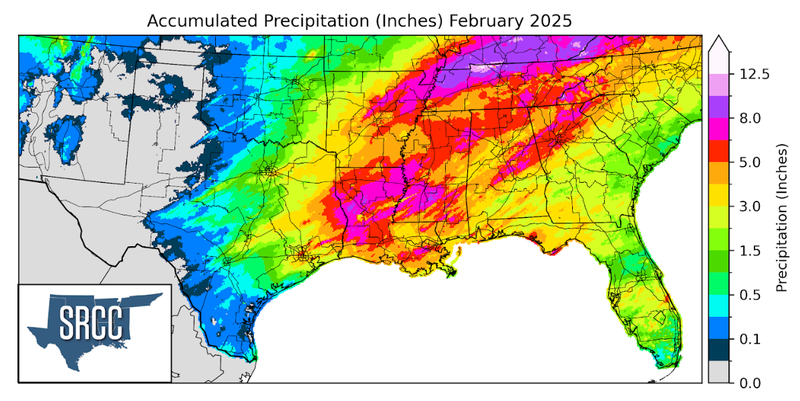
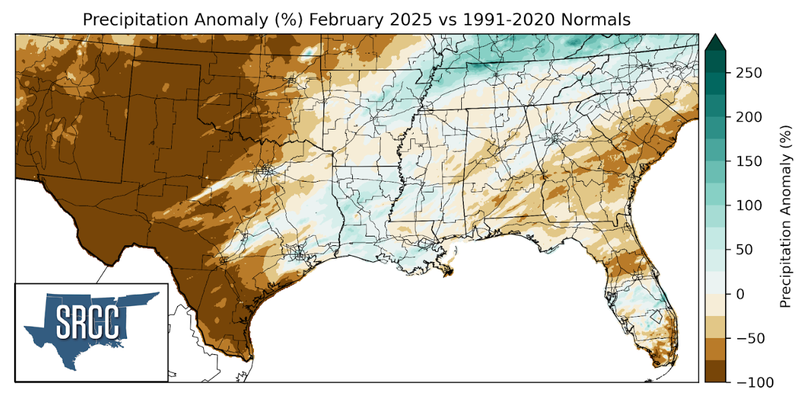
Similar to January, precipitation was concentrated in the Eastern half of the Region. This left monthly precipitation totals in West Texas, South Texas, Central Texas, North Texas, and Oklahoma well below normal. In the Eastern portion of the Region though, precipitation totals were near normal and even slightly above normal in Northern Tennessee and in Louisiana. Consequently, monthly precipitation accumulations were the largest in these areas. At least four inches of rain fell throughout much of Louisiana, Arkansas, Mississippi, and Tennessee. The largest monthly accumulation was seen near Clarksville, TN where over a foot of rain fell this February. Much of this rain fell in the second week of February when multiple frontal systems disturbed the weather pattern.
Drought:
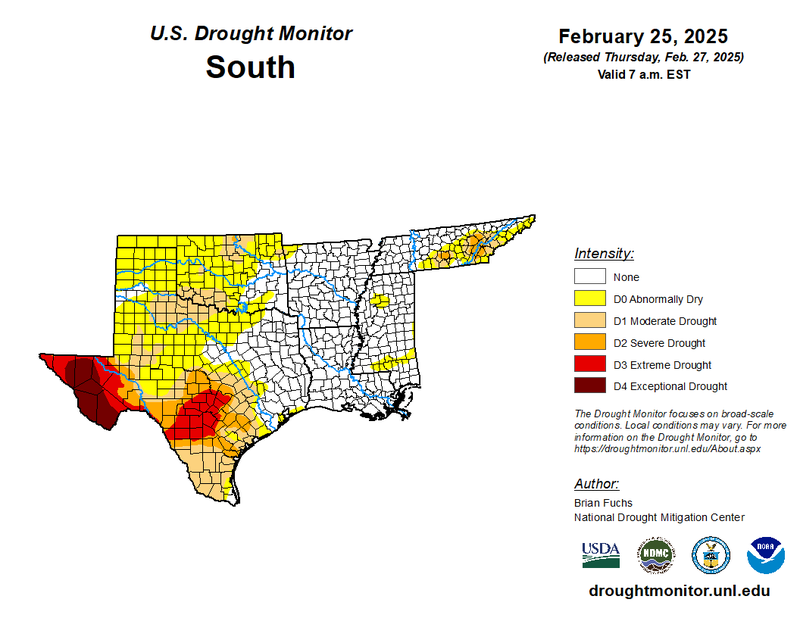
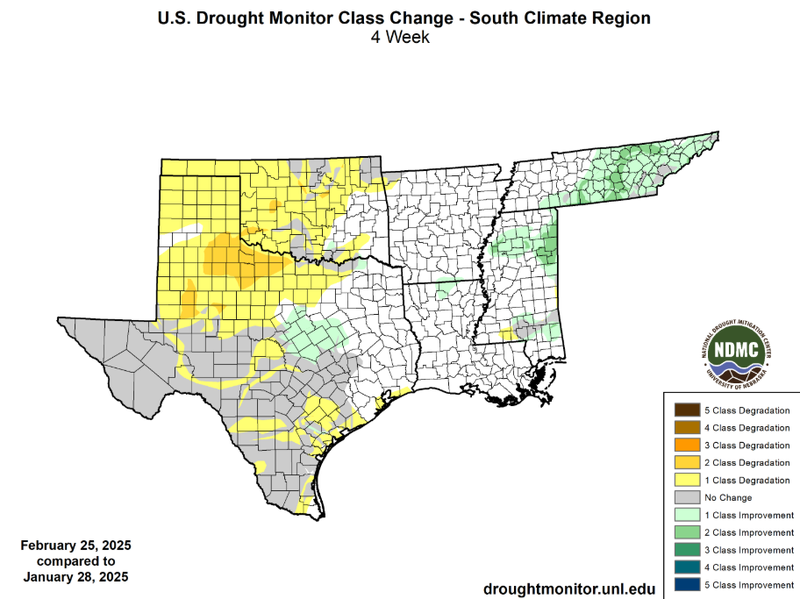
The weather this February ranged from weeks of warm weather and rain to weeks with dry conditions and blistering cold. Rainfall was concentrated in the eastern portion of the Region, leaving the western portion dry. Below-normal rainfall totals in this eastern portion of the Region coincide with widespread one-class drought category degradations throughout northwest Texas and much of Oklahoma. Additionally, some two-class degradation was observed in the Wichita Falls area as well. These degradation resulted in the introduction of drought and abnormally dry conditions in the respective areas. On the other hand, significant rainfall in the eastern half of the Region resulted in drought improvements in Northern Mississippi and Tennessee. These improvements in Mississippi were almost enough to eliminate drought throughout the state. Tennessee, though, began February with areas of extreme drought, which have improved to only a few small areas of extreme drought. Overall, improvements were not enough to outweigh the widespread degradations. Therefore, the percentage of the region experiencing drought conditions rose 17 percent from the end of January. Drought severity also rose ever so slightly at a regional level. From the end of January to the end of February the percentage of areas experiencing severe to exceptional drought (D2 - D4), rose by half a percent.
According to the U.S. Monthly Drought Outlook for this March, drought is expected to remain yet improve in isolated areas of Tennessee. Drought is expected to persist in West Texas and South Texas. Finally, drought development is likely in areas of Central Texas, East Texas, and Southwest Louisiana.
